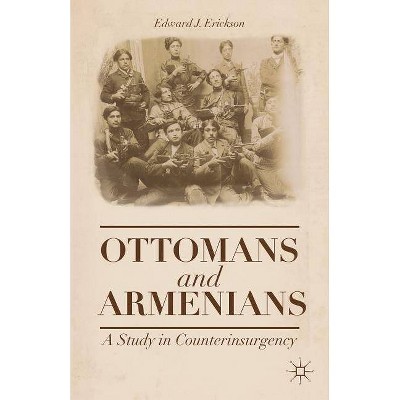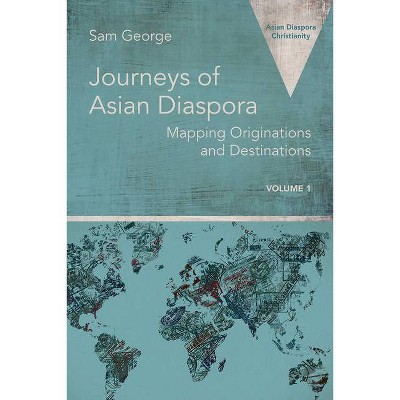Armenians Beyond Diaspora - (Alternative Histories) by Tsolin Nalbantian (Paperback)

Similar Products
Products of same category from the store
AllProduct info
<p/><br></br><p><b> About the Book </b></p></br></br><p>This book argues that Armenians around the world - in the face of the Genocide, and despite the absence of an independent nation-state after World War I - developed dynamic socio-political, cultural, ideological and ecclesiastical centres. </p><p/><br></br><p><b> Book Synopsis </b></p></br></br><p>This book argues that Armenians around the world - in the face of the Genocide, and despite the absence of an independent nation-state after World War I - developed dynamic socio-political, cultural, ideological and ecclesiastical centres. And it focuses on one such centre, Beirut, in the postcolonial 1940s and 1950s.</p> <p>Tsolin Nalbantian explores Armenians' discursive re-positioning within the newly independent Lebanese nation-state; the political-cultural impact (in Lebanon as well as Syria) of the 1946-8 repatriation initiative to Soviet Armenia; the 1956 Catholicos election; and the 1957 Lebanese elections and 1958 mini-civil war. What emerges is a post-Genocide Armenian history of - principally - power, renewal and presence, rather than one of loss and absence.</p><p/><br></br><p><b> From the Back Cover </b></p></br></br>A socio-political and cultural history of the Armenians in Cold War Lebanon This book argues that Armenians around the world - in the face of the Genocide, and despite the absence of an independent nation-state after World War I - developed dynamic socio-political, cultural, ideological and ecclesiastical centres. And it focuses on one such centre, Beirut, in the postcolonial 1940s and 1950s Tsolin Nalbandian explores Armenians' discursive re-positioning within the newly independent Lebanese nation-state; the political-cultural impact (in Lebanon as well as Syria) of the 1946-8 repatriation initiative to Soviet Armenia; the 1956 Catholicos election; and the 1957 Lebanese elections and 1958 mini-civil war. What emerges is a post-Genocide Armenian history of - principally - power, renewal and presence, rather than one of loss and absence. Key Features Explores Lebanese Armenians' changing views of their place in the making of the Lebanese state and its wider Arab environment, and in relation to the Armenian Socialist Soviet Republic Challenges the dominant Armenian historiography, which treats Lebanese Armenians as a subsidiary of an Armenian global diaspora Contributes to an understanding of the development of class and sectarian cleavages that led to the breakdown of civil society in Lebanon from 1975 Highlights the role of societal actors in the US-Soviet Cold War in the Middle East Challenges the tendency to read Middle East history through the lens of dominant (Arab) nationalisms Tsolin Nalbantian is Lecturer in Modern Middle East History at Leiden University<p/><br></br><p><b> About the Author </b></p></br></br><p>Tsolin Nalbantian is Lecturer in Modern Middle East History at Leiden University. She is co-series editor of Critical, Connected Histories (Leiden University Press) and has published articles in Mashriq & Mahjar, MESA Review of Middle East Studies and History Compass. She has written the entry 'Armenians in the Middle East' for the Routledge Handbook of Minorities in the Middle East (2018).<p>
Price History
Cheapest price in the interval: 24.99 on November 8, 2021
Most expensive price in the interval: 24.99 on December 20, 2021
Price Archive shows prices from various stores, lets you see history and find the cheapest. There is no actual sale on the website. For all support, inquiry and suggestion messagescommunication@pricearchive.us




















